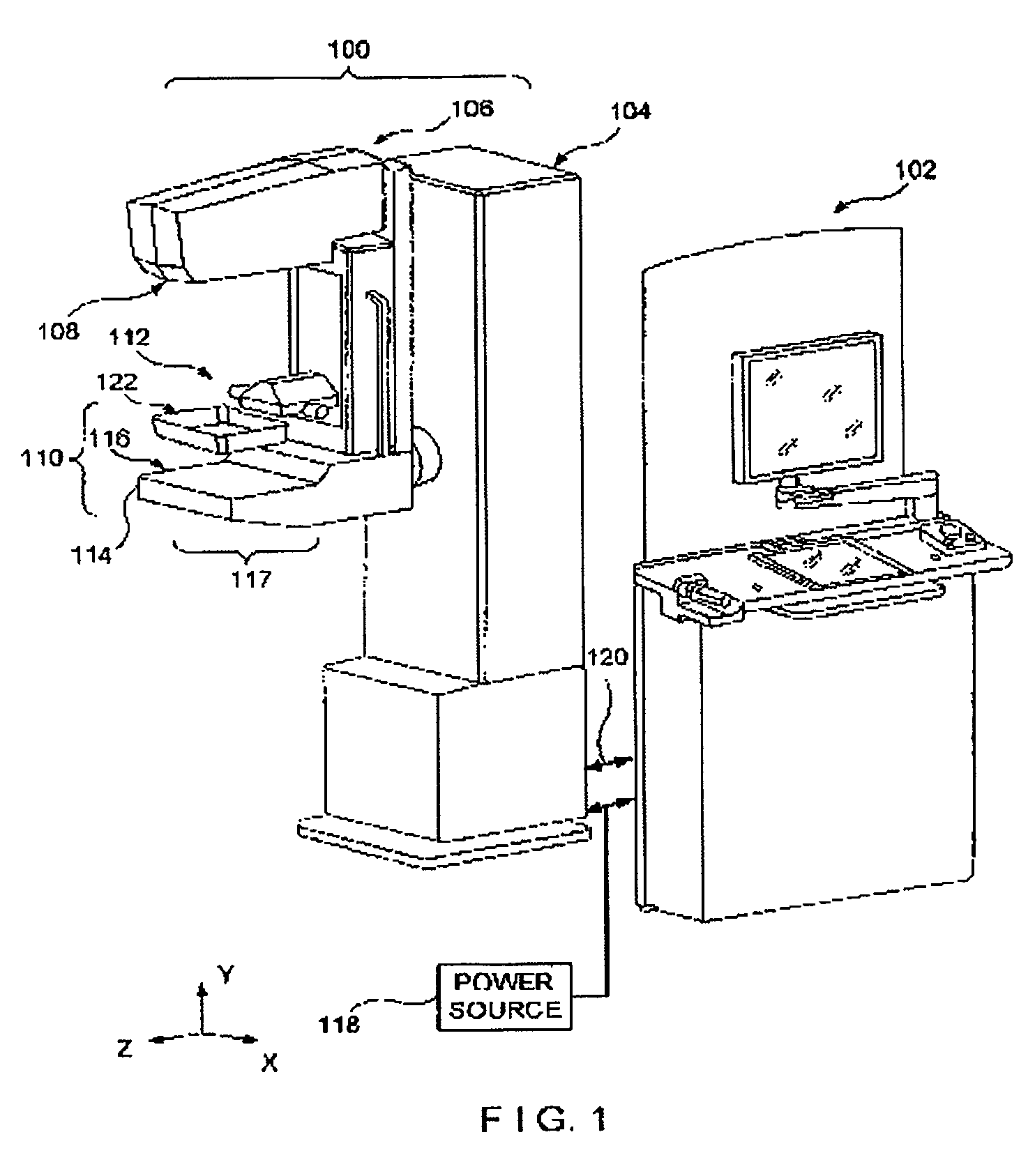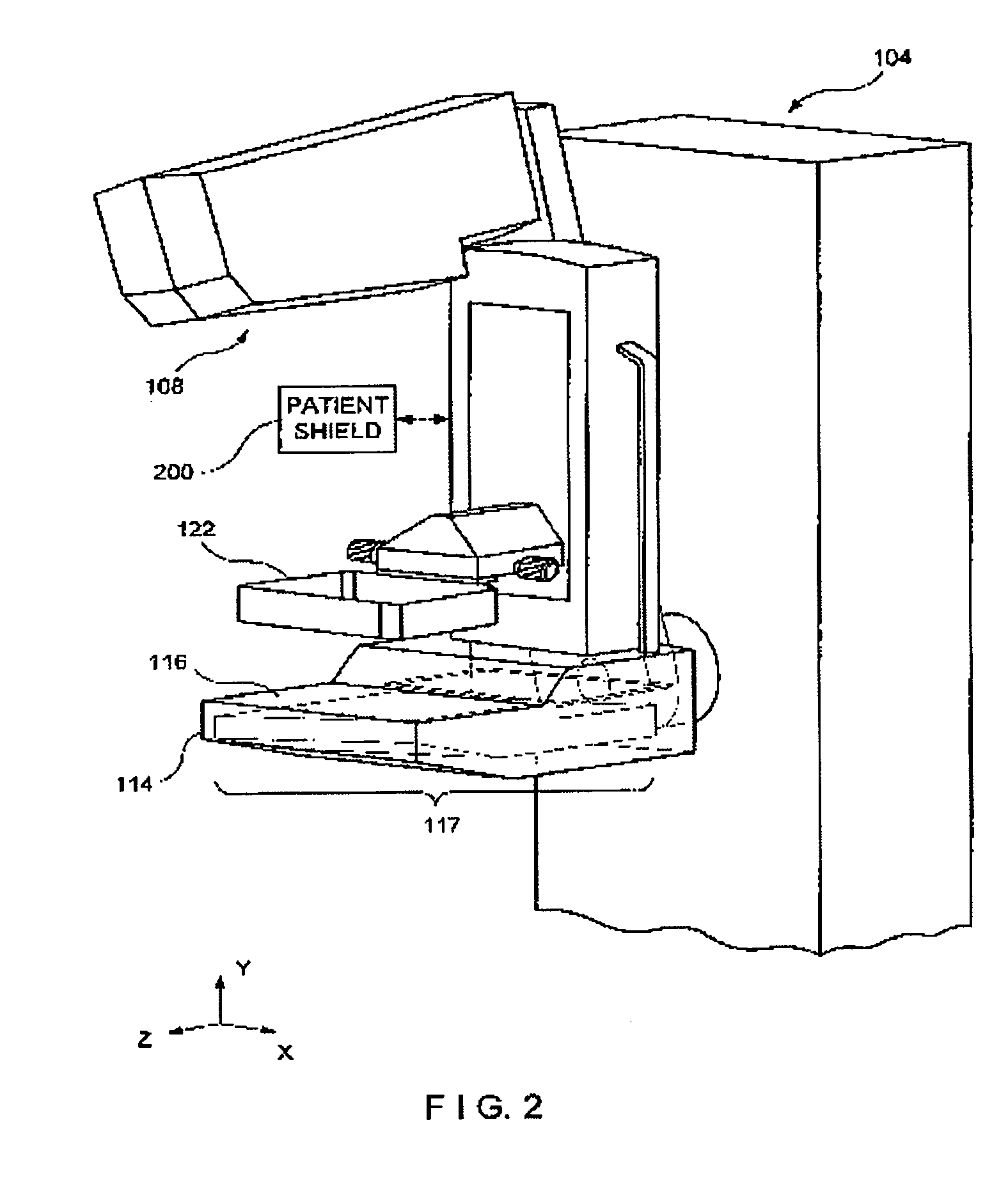System and method for low dose tomosynthesis
a low-dose tomosynthesis and low-dose technology, applied in the field of medical imaging, can solve problems such as structure overlay, achieve the effects of reducing patient dose, improving mass detection, and reducing quantum mottl
- Summary
- Abstract
- Description
- Claims
- Application Information
AI Technical Summary
Benefits of technology
Problems solved by technology
Method used
Image
Examples
Embodiment Construction
[0022]Sensitivity is the ability of the imaging technology to detect a cancerous lesion. Specificity is the ability of the imaging technology to ignore artifacts in images which merely appear similar to lesions. The present invention leverages the combined strengths of two-dimensional and three-dimensional imaging to provide a breast imaging system with improved sensitivity, specificity and the added advantage of reduced patient dosing.
[0023]One important characteristic of any digital imaging system is the ability to vary the amount and intensity of radiation used to generate any image. Radiation intensity is related to the atomic number (Z) of the x-ray target, the x-ray current (mA), x-ray voltage and x-ray beam filtration. Radiation intensity is varied to improve image quality, which in turn improves diagnostic sensitivity. When radiation intensity increases, quantum mottle (image noise caused by photon absorption) will decrease and visa versa.
[0024]Radiation intensity is directl...
PUM
 Login to View More
Login to View More Abstract
Description
Claims
Application Information
 Login to View More
Login to View More - R&D
- Intellectual Property
- Life Sciences
- Materials
- Tech Scout
- Unparalleled Data Quality
- Higher Quality Content
- 60% Fewer Hallucinations
Browse by: Latest US Patents, China's latest patents, Technical Efficacy Thesaurus, Application Domain, Technology Topic, Popular Technical Reports.
© 2025 PatSnap. All rights reserved.Legal|Privacy policy|Modern Slavery Act Transparency Statement|Sitemap|About US| Contact US: help@patsnap.com



